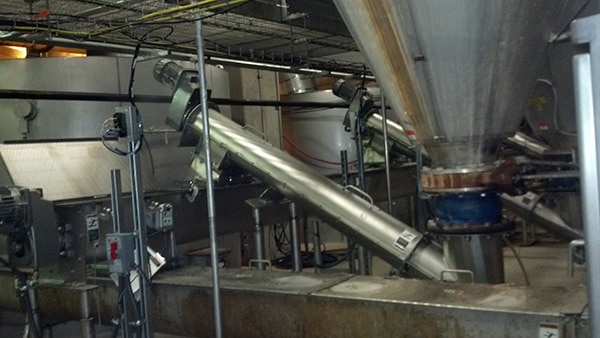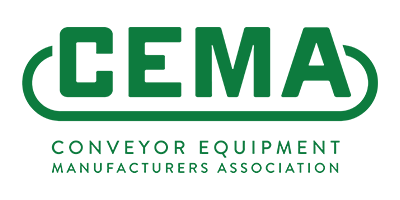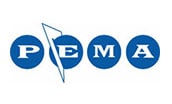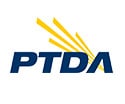Designing Inclined Screw Conveyors for Upset Conditions
Download PDFQuestion
I have an inclined screw conveyor that continually has problems. The motor will trip out at the worst time and shut down my process. What can I do to get the inclined screw conveyor to work consistently?

Answer
Using an inclined screw conveyor to convey bulk materials is very advantageous and solves layout problems. One inclined screw conveyor can be used to occupy a minimum of space instead of a multiple conveyor arrangement.
However, as the degree of incline increases from horizontal, the efficiency of a screw conveyor is reduced and torque requirements increase due to the influence of gravity and fallback of the bulk material.
KWS recommends that screw conveyors located on inclines over ten degrees be designed to start and operate under upset conditions. An upset condition is the worst case scenario of the trough being 100-percent full in cross-section for the full length of the conveyor. Sufficient horsepower and torque is required to start the screw conveyor in the upset condition.
An upset condition could occur if normal flow is interrupted (example: a plug develops at the conveyor discharge) and the screw conveyor becomes completely full for the entire trough length. Another example of an upset condition is if a free-flowing bulk material falls back down the incline when a screw conveyor is shut down, completely filling the unit.
All KWS inclined screw conveyors are designed to start and operate under upset conditions, eliminating the chance of the motor stalling out and shutting down the process. Engineers at KWS study the characteristics of bulk materials for various applications and incorporate many features into the design of inclined screw conveyors to guarantee effective conveying.
Basic Design Rules
Use Proper Conveyor Design – KWS performs calculations for normal operating conditions to determine the operating speed of the inclined screw conveyor at the desired capacity, density, and level of trough loading. Conveyor diameter, pitch, trough type and speed are selected based on bulk material characteristics such as flowability, angle of repose and degree of abrasiveness.
Consider Various Trough Loading Conditions – Under normal operating conditions inclined screw conveyor trough loading is typically between 30 and 45-percent. However, when the inclined screw conveyor is shut down, bulk materials fall back and fill up the trough area. When restarted, the unit will instantaneously convey a larger capacity. KWS considers the larger capacity due to upset conditions in all calculations.
Design for Additional Horsepower and Torque – Bulk materials can compress and pack when an inclined screw conveyor is shut down, causing more demand on the drive unit. KWS designs inclined screw conveyors with the additional horsepower and torque to overcome upset conditions. Bulk density and flowability are considered in packed condition for all horsepower calculations.





